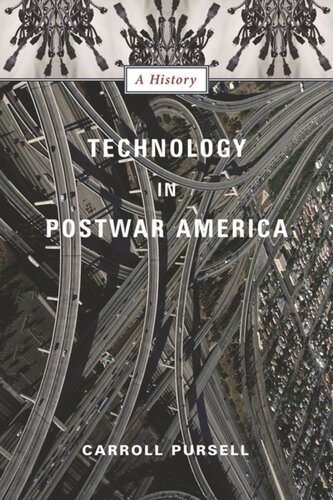

Most ebook files are in PDF format, so you can easily read them using various software such as Foxit Reader or directly on the Google Chrome browser.
Some ebook files are released by publishers in other formats such as .awz, .mobi, .epub, .fb2, etc. You may need to install specific software to read these formats on mobile/PC, such as Calibre.
Please read the tutorial at this link: https://ebookbell.com/faq
We offer FREE conversion to the popular formats you request; however, this may take some time. Therefore, right after payment, please email us, and we will try to provide the service as quickly as possible.
For some exceptional file formats or broken links (if any), please refrain from opening any disputes. Instead, email us first, and we will try to assist within a maximum of 6 hours.
EbookBell Team

4.8
84 reviewsCarroll Pursell tells the story of the evolution of American technology since World War II. His fascinating and surprising history links pop culture icons with landmarks in technological innovation and shows how postwar politics left their mark on everything from television, automobiles, and genetically engineered crops to contraceptives, Tupperware, and the Veg-O-Matic.
Just as America's domestic and international policies became inextricably linked during the Cold War, so did the nation's public and private technologies. The spread of the suburbs fed into demands for an interstate highway system, which itself became implicated in urban renewal projects. Fear of slipping into a postwar economic depression was offset by the creation of "a consumers' republic" in which buying and using consumer goods became the ultimate act of citizenship and a symbol of an "American Way of Life."
Pursell begins with the events of World War II and the increasing belief that technological progress and the science that supported it held the key to a stronger, richer, and happier America. He looks at the effect of returning American servicemen and servicewomen and the Marshall Plan, which sought to integrate Western Europe into America's economic, business, and technological structure. He considers the accumulating "problems" associated with American technological supremacy, which, by the end of the 1960s, led to a crisis of confidence.
Pursell concludes with an analysis of how consumer technologies create a cultural understanding that makes political technologies acceptable and even seem inevitable, while those same political technologies provide both form and content for the technologies found at home and at work. By understanding this history, Pursell hopes to advance a better understanding of the postwar American self.